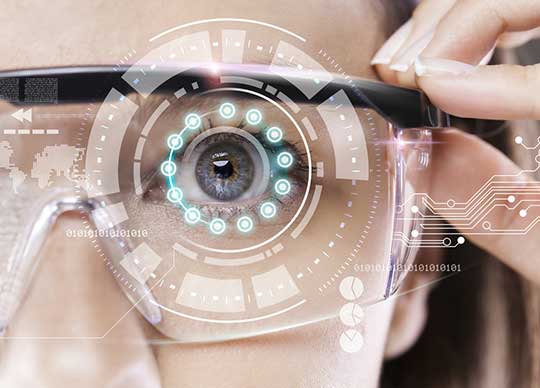Smart Accessories The Future of Wearable Technology
Smart Accessories
In today’s fast-paced, technology-driven world, smart accessories have emerged as a revolutionary trend, seamlessly blending fashion, functionality, and innovation. These devices, ranging from smartwatches to intelligent jewelry, are transforming how we interact with technology daily. Unlike traditional accessories, smart accessories are embedded with advanced sensors, connectivity features, and computing power, enabling them to perform tasks beyond mere aesthetics. From tracking fitness metrics to delivering notifications and even enhancing personal safety, these devices are redefining convenience and style.
The rise of smart accessories reflects a broader shift toward the Internet of Things (IoT), where everyday objects are interconnected to provide enhanced user experiences. As consumer demand for multifunctional and stylish wearables grows, manufacturers are racing to innovate, creating products that cater to diverse needs. This article explores the world of smart accessories, delving into their types, features, benefits, and the future potential of this rapidly evolving market. Whether you’re a tech enthusiast or someone looking to upgrade their accessory game, this guide will provide a comprehensive overview of smart accessories and why they matter.
Types of Smart Accessories
Smart accessories come in various forms, each designed to cater to specific lifestyles and preferences. Below, we explore the most popular categories of smart accessories dominating the market today.
1. Smartwatches
Smartwatches are perhaps the most recognizable smart accessories, combining the functionality of a timepiece with the power of a mini-computer. Brands like Apple, Samsung, and Fitbit have popularized smartwatches that offer features such as fitness tracking, heart rate monitoring, GPS navigation, and smartphone connectivity. These devices allow users to receive calls, respond to messages, and even make payments without reaching for their phones.
Modern smartwatches are equipped with advanced health monitoring tools, such as electrocardiogram (ECG) sensors and blood oxygen level detectors, making them valuable for health-conscious individuals. For instance, the Apple Watch Series 10 can detect irregular heart rhythms and alert users to potential health issues. Additionally, smartwatches are customizable with various watch faces and bands, ensuring they remain stylish while offering cutting-edge technology.
2. Fitness Trackers
Fitness trackers, such as those from Fitbit and Xiaomi, focus primarily on health and wellness. These lightweight devices are designed to monitor physical activity, including steps taken, calories burned, and sleep patterns. Many fitness trackers are water-resistant, making them ideal for swimmers and athletes who need durable, all-weather devices.
Unlike smartwatches, fitness trackers prioritize simplicity and battery life, often lasting weeks on a single charge. They are perfect for individuals who want to maintain an active lifestyle without the complexity of a full-featured smartwatch. Some models even integrate with mobile apps to provide detailed insights into fitness progress, helping users set and achieve their health goals.
3. Smart Jewelry
Smart jewelry represents the perfect marriage of fashion and technology. Rings, necklaces, and bracelets embedded with sensors and connectivity features are gaining popularity among those who want tech without compromising style. For example, the Oura Ring tracks sleep, activity, and heart rate variability, all while looking like a sleek, minimalist piece of jewelry.
Smart jewelry is particularly appealing to women, as it offers discreet functionality. Some pieces, like smart pendants, can send alerts to loved ones in emergencies, enhancing personal safety. These accessories are designed to blend seamlessly into everyday wardrobes, proving that technology doesn’t have to be bulky or obtrusive.
4. Smart Glasses
Smart glasses are an emerging category, with companies like Google, Ray-Ban, and Amazon leading the charge. These glasses integrate augmented reality (AR), cameras, and audio systems to provide immersive experiences. For instance, Ray-Ban Stories, developed in collaboration with Facebook, allow users to capture photos, listen to music, and take calls through built-in speakers and microphones.
Smart glasses are particularly useful for professionals and creatives who need hands-free access to information. AR-enabled glasses can display navigation directions, translate languages in real-time, or provide contextual data for tasks like repairs or design. As the technology matures, smart glasses are expected to become more compact and stylish, further bridging the gap between utility and fashion.

5. Smart Clothing
Smart clothing is a futuristic category that embeds sensors and conductive fibers into fabrics. From smart shirts that monitor heart rate to socks that analyze running form, these accessories are revolutionizing the fitness and healthcare industries. Brands like Under Armour and Sensoria are developing clothing that provides real-time feedback on posture, muscle engagement, and performance.
Beyond fitness, smart clothing has applications in medical monitoring. For example, garments with embedded sensors can track vital signs for patients with chronic conditions, sending data directly to healthcare providers. While still in its early stages, smart clothing holds immense potential for both consumer and professional use.
Benefits of Smart Accessories
Smart accessories offer a range of benefits that make them indispensable in modern life. Here are some key advantages:
Convenience and Connectivity
Smart accessories keep users connected without the need to constantly check their smartphones. Notifications for calls, messages, and emails are delivered directly to your wrist, glasses, or jewelry, allowing you to stay informed while staying focused on the task at hand. This seamless integration enhances productivity and reduces distractions.
Health and Wellness Monitoring
One of the most significant advantages of smart accessories is their ability to monitor health metrics. From tracking daily steps to analyzing sleep patterns and detecting potential health issues, these devices empower users to take control of their well-being. Many smart accessories sync with apps that provide actionable insights, helping users make informed lifestyle choices.
Personalization and Style
Unlike traditional tech gadgets, smart accessories are designed with aesthetics in mind. Customizable bands, watch faces, and designs ensure that users can express their personal style while enjoying advanced functionality. Whether you prefer a sleek smartwatch or an elegant smart ring, there’s an accessory to suit every taste.
Enhanced Safety
Some smart accessories, particularly smart jewelry and watches, include safety features like emergency alerts and GPS tracking. These features are especially valuable for individuals who travel frequently or live alone, providing peace of mind for both users and their loved ones.
Eco-Friendly Innovations
Many smart accessory manufacturers are prioritizing sustainability by using eco-friendly materials and energy-efficient technologies. For example, some smartwatches use solar-powered charging, reducing reliance on traditional batteries. This focus on sustainability aligns with growing consumer demand for environmentally responsible products.
Challenges and Considerations
While smart accessories offer numerous benefits, they also come with challenges. Privacy is a significant concern, as these devices collect sensitive data such as health metrics and location information. Manufacturers must prioritize robust security measures to protect user data from breaches.
Battery life is another consideration, particularly for feature-rich devices like smartwatches and glasses. While fitness trackers often boast long battery life, more complex devices may require daily charging, which can be inconvenient for some users.
Cost is also a factor, as high-end smart accessories can be expensive. However, as the market grows, more affordable options are becoming available, making smart accessories accessible to a broader audience.
The Future of Smart Accessories
The future of smart accessories is bright, with advancements in artificial intelligence (AI), 5G connectivity, and miniaturization driving innovation. AI-powered accessories will offer more personalized experiences, such as tailored fitness plans or predictive health alerts. 5G will enable faster data transfer, making real-time interactions smoother and more reliable.
Miniaturization will allow for even smaller, more discreet devices, further blurring the line between technology and fashion. We can expect to see smart accessories integrated into everyday items like belts, hats, and even contact lenses, expanding their applications and accessibility.
Additionally, the integration of smart accessories with other IoT devices, such as smart home systems, will create a more interconnected ecosystem. Imagine a smartwatch that automatically adjusts your home’s lighting and temperature based on your preferences or a pair of smart glasses that syncs with your car’s navigation system.
Conclusion
Smart accessories are more than just gadgets; they are a testament to how technology can enhance our lives without sacrificing style or convenience. From smartwatches that keep us connected to smart clothing that monitors our health, these devices are paving the way for a more integrated and personalized future. As technology continues to evolve, smart accessories will become even more versatile, affordable, and indispensable.
Whether you’re looking to improve your fitness, stay connected on the go, or simply add a touch of innovation to your wardrobe, there’s a smart accessory for you. As the market continues to grow, now is the perfect time to explore the world of smart accessories and discover how they can transform your daily life.






